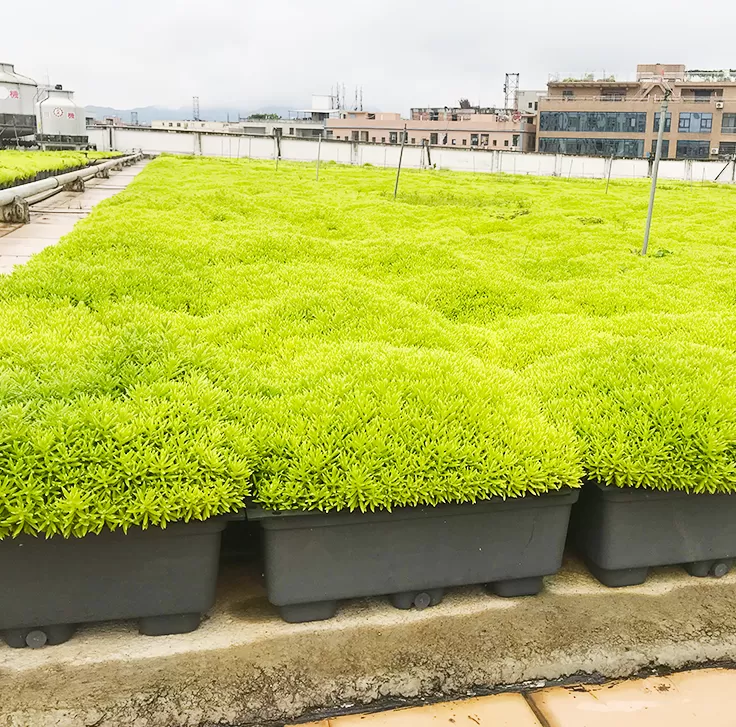With the development of society, roof greening has become the inevitable trend of landscape greening and modern architecture development. Because planting on the roof is different from planting on the ground, plants on the ground may not be suitable for planting on the roof.

Beijing belongs to warm temperate semi humid monsoon continental climate, four seasons, high temperature and rainy in summer, cold and dry winter, green roof, climate conditions suitable for highland, light roof, strong wind, limited load, determines the adaptability and Beijing has strict requirements for the resistance of plant roof greening, so select successful roof greening plants, screening drought resistance Plants with strong artistic indexes such as cold resistance, barrenness or drought tolerance are the direct factors that directly affect the growth of plants. The effect of roof greening landscape is good or bad.
The roof garden mostly adopts the composite structure of trees, shrubs and grasses, which has strict requirements for the treatment of building load-bearing and roof greening of each structural layer. Green roofs also require a lot of careful maintenance and management, which is expensive. According to the investigation of the main roof gardens in Beijing, the selected plants mainly include Platycladus orientalis, Sabina, Pinus tabulaeformis, Cotinus viridis, Ailanthus altissima, elm, plant, ash, ginkgo, Magnolia, silk, pomegranate, plum, etc. Persian chrysanthemum, plum blossom, Chinese Bauhinia, Chinese pagoda tree, big leaf boxwood, small leaf boxwood, golden leaf Ligustrum, red king, purple gold belt, Arnebia, forsythia, purple leaf plum, clove, tobacco tree, brocade, azalea, honeysuckle, forsythia, Chinese rose,
Among these plants, Pinus tabulaeformis, Ailanthus altissima, elm, Ginkgo biloba, plants and ash strong roots, such as deep grave trees, are resistant to cold and drought. Although the resistance is poor, it shows strong resistance. Because of their deep-rooted characteristics, the application of waterproof layer, insulation layer of root insulation material and planting layer have high requirements for the thickness of substrate, Construction should be strictly restricted, so this kind of tree species should be used with caution.
Secondly, the growth of early garden bamboo was poor under high temperature and rainy weather in summer, and the dead branches were serious in winter. Sedum plants grow well in winter, but the leaves of some plants on the ground turn yellow and green after frost and stop growing, so their ornamental value decreases. In the hot and rainy weather in summer, Tu family and Buddha showed the symptoms of waterlogging resistance, and recovered quickly after high temperature and humidity.
According to the climate and roof characteristics of Beijing, it is required that green plants should have strong ability of cold resistance, drought resistance, high temperature and humidity resistance, ocean and wind. Some plants don't adapt, some need small environment to adapt. It grows well. For example, both yuhost and PA need shade to grow well. Rhododendrons need to grow in acid soil. Poplar, Euonymus microphylla, Ligustrum lucidum, purple and other hedgerows are not strong enough to survive in winter, so protective measures should be taken. Withered branches and death occur when trees turn green in spring.
Vegetation roofs are mostly made of low-lying ground cover plants, one of which is cold season grass (e.g., grass),. The most commonly used green roof is Buddha. Roof greening plays an important role in increasing the area of urban green space, improving the deteriorating human living environment and improving the urban heat island effect caused by various waste gas pollution. This is an important measure for large area vegetation of urban buildings. Green roofs still have a long way to go.